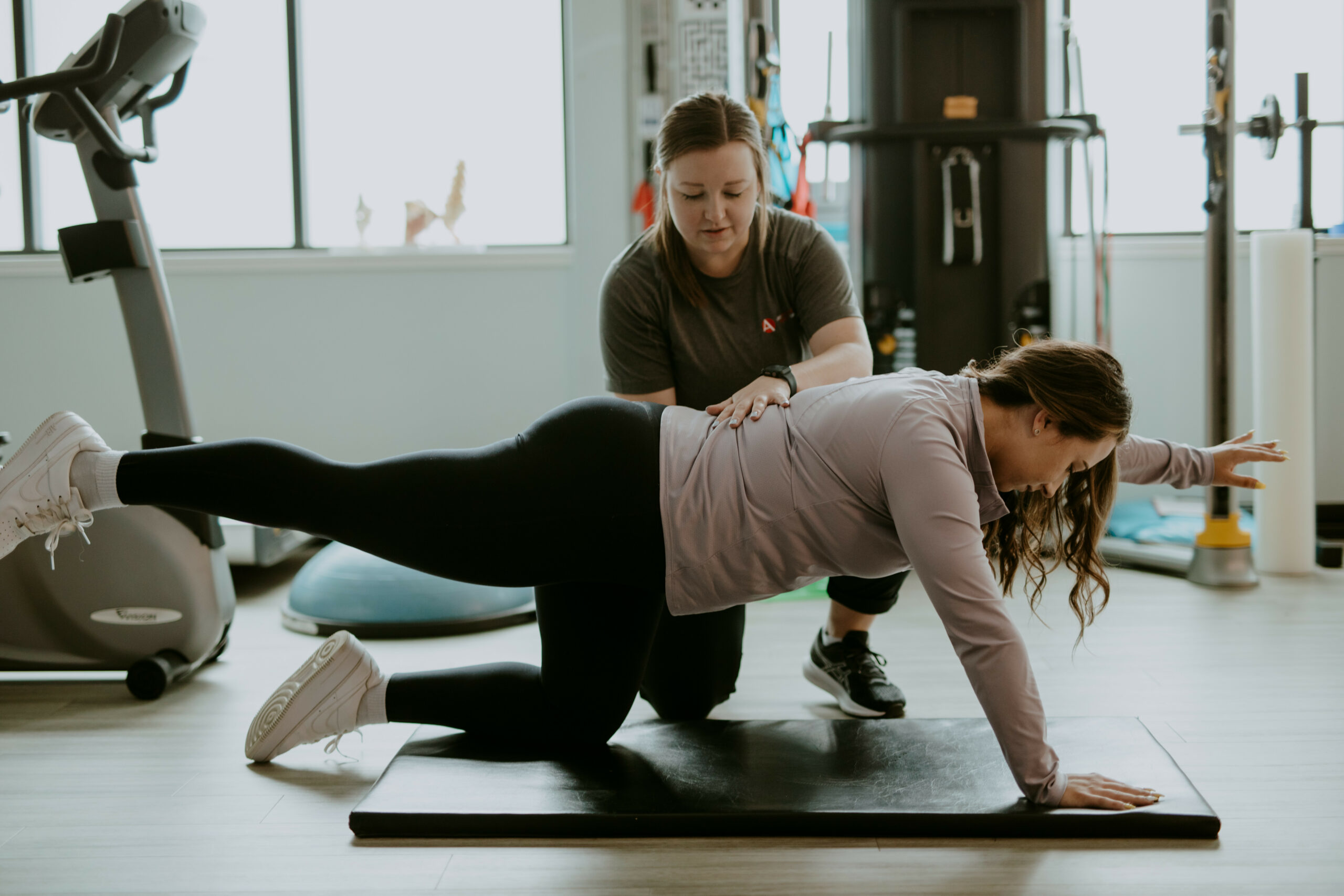Neck tension can be bothersome and affect your daily life. It might be hard to concentrate on tasks when you feel that tightness in your neck. Practicing simple exercises and stretches through physiotherapy can help relieve neck tension.
You might notice neck tension from sitting at a desk or looking at a screen for long periods. You can take care of this by adjusting your posture and including regular movement in your routine. These small changes can make a big difference.

Visit Our Top Rated Clinic in Surrey
Experiencing neck tension? Don’t let discomfort slow you down. At Panorama Physiotherapy & Sports Injury Clinic, our expert physiotherapists can help you identify the root cause of your neck pain and provide effective treatments for long-lasting relief. Book your consultation today and start your journey toward a pain-free neck!
Understanding Neck Tension
Neck tension often results from strain or stress, causing discomfort or pain. Let’s explore the key aspects of neck anatomy and common causes of tension to help you find relief.
Anatomy of the Neck
The neck consists of bones, muscles, nerves, and other tissues. The cervical spine, with its seven vertebrae, supports your head. These bones are connected by flexible discs that allow movement. Muscles in the neck and shoulders aid in motion and support. Nerves running through the cervical spine can be sensitive to pressure from tight muscles or misaligned bones. Ligaments and tendons keep everything in place, ensuring stability and balance.
Common Causes of Tension
Many factors can lead to neck tension. Poor posture, whether sitting at a desk or using a phone, often strains neck muscles. Stress also plays a significant role, leading to tight, rigid muscles. Injuries like whiplash can cause lasting tension if not treated. Additionally, incorrect sleeping positions can contribute to discomfort. Overuse of the neck muscles during activities or exercise might also lead to tension, as the muscles get tired or irritated.
Physiotherapy Techniques for Relief
Physiotherapy can help relieve neck tension through various techniques. These include exercises, manual adjustments, and using temperature treatments.
Stretching Exercises
Stretching helps increase flexibility and reduce tightness. You might try the chin tuck exercise, which involves gently pulling your head back while keeping your chin level. This stretches the neck muscles. Neck side bends can also help. Move your ear toward your shoulder slowly and hold for a few seconds on each side. Regularly doing these exercises can improve your neck’s movement and relieve tension.
Remember to perform each stretch gently and avoid any that cause pain. Consistency is key to seeing improvements in flexibility and reducing discomfort over time.
Strengthening Routines
Strengthening exercises support and stabilize the neck. Doing scapular squeezes can help. Sit or stand with good posture and squeeze your shoulder blades together. Neck isometrics are also useful. Apply light pressure with your hand against your head while resisting the movement. Hold for a few seconds and repeat.
These exercises target specific muscles important for neck stability. Stronger muscles can better support your neck, reducing tension and injury risk. Progress gradually by increasing repetitions as comfort allows.
Manual Therapy
Manual therapy involves hands-on techniques by a physiotherapist. They may use gentle mobilizations to improve joint movement or massage to ease muscle tightness. This approach helps in relieving pain and increasing mobility.
The therapist may also focus on soft-tissue work to release tension. You might feel immediate relief from pain and stiffness with these techniques. It’s important to work with a trained professional to ensure the therapy is beneficial and safe for your specific condition.
Heat and Cold Therapy
Applying hot or cold packs can be effective for neck tension. Heat therapy can relax and loosen tissues, helping blood flow to the area. You can use warm towels or heating pads for this. Cold therapy, like ice packs, can reduce swelling and numb sharp pain.
Use each treatment for about 15-20 minutes. Do not apply directly to the skin; use a barrier like a cloth. Alternating between heat and cold may provide added relief. Always pay attention to how your body responds and adjust accordingly.
Conclusion
Taking steps to relieve neck tension can greatly improve your quality of life. Simple changes and exercises focus on loosening and strengthening neck muscles. Regular stretches and maintaining good posture can make a big difference.
If neck tension persists, consider seeking professional help. Visiting a physiotherapist offers tailored exercises and therapies to address your specific needs.
We invite you to visit Panorama Physiotherapy & Sports Injury Clinic in Surrey, BC. Our team is ready to help you feel better and find effective solutions for neck tension.